Coffee: With Milk Or No Milk?
December 07, 2022

Here is a comprehensive guide to hot coffee drinks you can order at your local shop or make at home.
Espresso
As one of coffee's signature preparations, espresso can be enjoyed on its own or used as the caffeinated base for several popular beverages. Espresso is made from finely ground coffee brewed under high pressure and high heat in a short time frame. Typically, the only method for producing the ideal conditions for espresso extraction is by using an espresso machine, but stovetop Moka's produce similar conditions with comparable results.Espresso shots can come as singles or doubles at one and two fluid ounces, respectively. The extraction is dark with an intensely aromatic, earthy, and bittersweet flavor. Espresso should also display a crema layer, a layer of creamy microbubbles produced from the extraction's CO2 interacting with the coffee's natural fats and oils.
Lungo
Lungo refers to an espresso shot that is extracted in a more extended period and using a higher volume of water. The final product is a flavorful but more mellow-tasting coffee with a less creamy texture.Ristretto
Ristretto refers to the opposite of a lungo: an espresso shot extracted in a shorter period and using a lower volume of water. This produces a smaller, more intensely flavored espresso.Filtered Coffee
Filtered coffee refers to a brewing method rather than one specific beverage. Using thin paper-based filters, these recipes have most of the coffee's oils pulled out of the final brew as they are absorbed by the filter. This creates a smooth, clean-tasting cup where the grounds' natural flavors shine through clearly in each sip.Drip coffee is the most commonly found type of filtered coffee. Made with an auto-drip machine, drip usually calls for 1-2 tbsps of medium-coarse grounds per 6 ounces of water.
Pour Over
Pour over coffees are another type of filtered coffee but are far more technical to brew. If brewed properly, the pour over method can produce a clean, full-bodied, and incredibly fragrant cup. However, you'll need a medium-coarse grind and a handful of equipment to get started.For this method, you'll need a mug, pour over dripper, paper filters, a scale, a timer, and a water kettle with a gooseneck spout for optimal control. For clear instructions on how to make an excellent pour over at home, please read our step-by-step guide.
To shop for all your necessary pour over equipment, check out our Pour Over Maker and other important accessories here.
This more time-consuming brewing method uses gentle temperatures, water control, and precision to extract maximum flavor from your grounds while simultaneously filtering out oils. With some larger pour over drippers, making batches for a few cups is possible. However, pour over is a brewing method that requires patience and is typically reserved for individual cups.
French Press
The French Press is one of the most convenient methods for brewing several cups at once. Brewed in a lidded glass or metal vessel with a pressable metal filter (aka the "plunger"), coarse coffee grounds get saturated in hot water for a few minutes before the grounds are pressed to the bottom by the filter. This ultimately separates the grounds from the brewed coffee inside the vessel.This method doesn't remove the coffee's natural oils from the brew, which creates a bold coffee with plenty of texture. Although dosages of grounds may vary depending on what size French Press is being used, most recipes call for one tbsp of coffee per four ounces of water.
Interested in a French Press for your home? Check out our 20z borosilicate glass French Press with a stainless steel plunger. For more information on how to brew the perfect French Press, find the tips and tricks you're looking for here.
